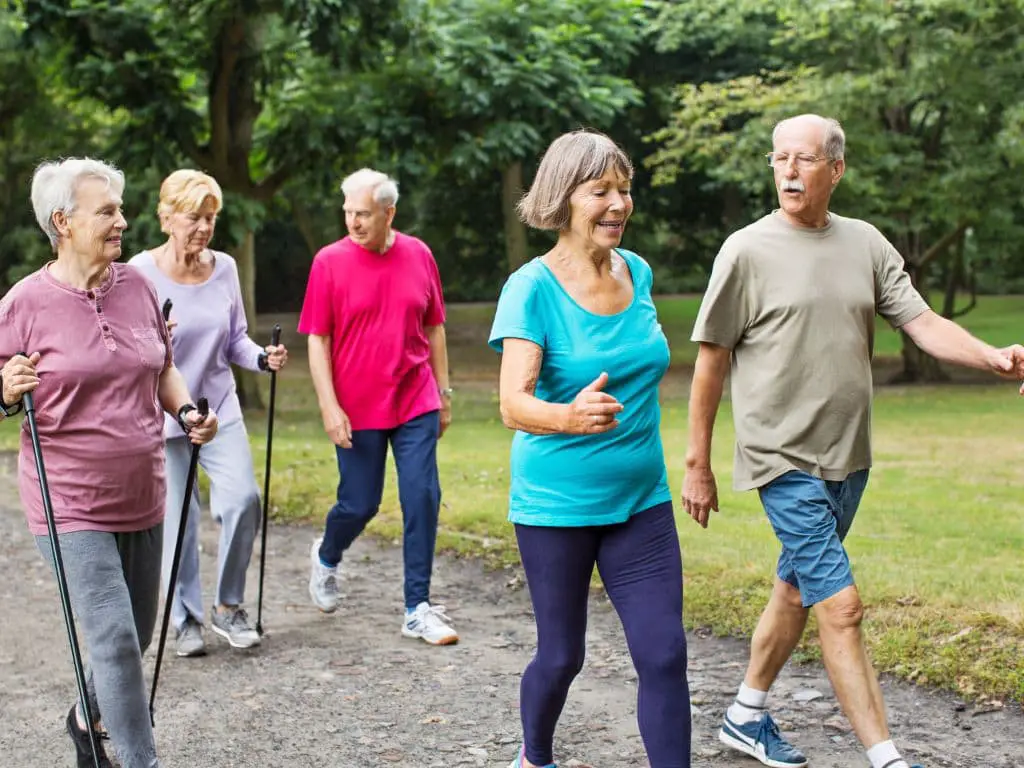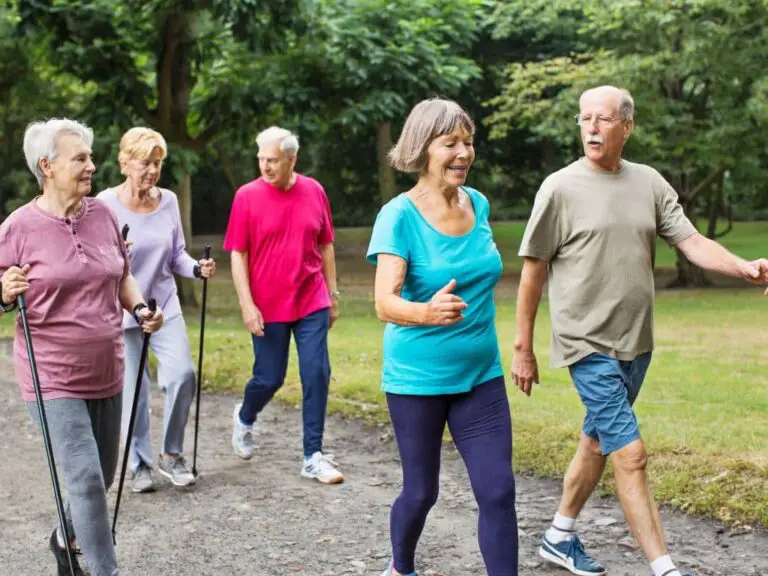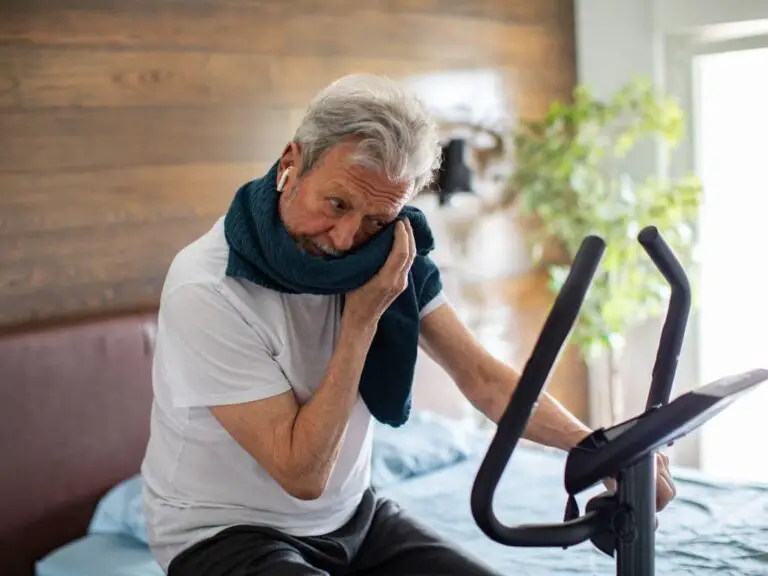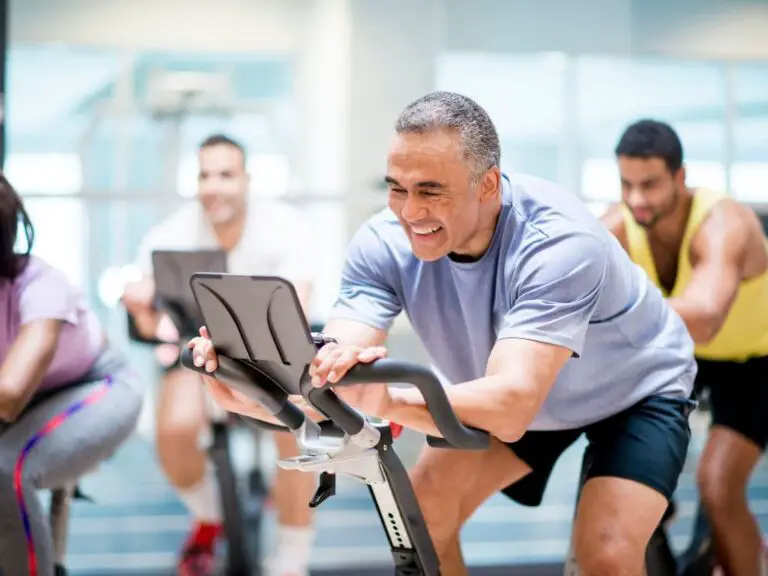Do You Need Rest Days From Walking?
Regular physical activity such as walking is extremely beneficial for the health and well-being of seniors. However, rest days are a crucial component of an effective walking routine.
Rest days from walking are necessary, especially for seniors, to allow the body to recover and prevent overtraining. Experts recommend at least 1-2 rest days per week during a new walking routine. Insufficient rest can lead to fatigue, injuries, and decreased performance. Rest days also aid in repairing and strengthening muscles and joints.
Walking too often without adequate rest can lead to overtraining, fatigue, injuries and burnout.

This article will discuss the importance of rest days from walking for seniors, and provide tips on how seniors can make the most of rest days while staying motivated to keep up their walking routine.
How Does Walking Contribute to the Health and Well-being of Seniors?
Walking is an excellent form of moderate-intensity physical activity that provides many health benefits for seniors. Regular walking can improve cardiovascular fitness, strengthen muscles and bones, enhance balance and mobility, and prevent many chronic diseases.
How Does Walking Improve the Mobility, Balance, Strength, and Endurance of Seniors?
Walking requires using the major muscle groups in the legs, core and back. Over time, the repetitive motion of walking strengthens these muscle-strengthening activities. Walking also enhances endurance, allowing seniors to walk farther and engage in daily activities for longer periods. The variations in terrain and pace involved in walking improves balance by challenging the body’s proprioceptive system. Lastly, walking keeps the joints mobile and flexible, preventing the loss of range of motion that can limit mobility.
Why Do Seniors Need Rest Days from Walking?
While walking provides many benefits, it is still a form of exercise that places stress on the muscles, bones and joints. Rest days are needed to allow the body to recover and adapt appropriately.
What are the Benefits of Rest Days for Seniors?
Rest days give stressed muscles and joints a break to heal and strengthen. They allow recovery so the cardiorespiratory system can adjust to the progressionof exercise. Rest also helps prevent overtraining, which can lead to decreased performance. Mentally, rest days provide a break from the discipline of routine exercise.
What are the Risks of Not Taking Rest Days for Seniors?
Insufficient rest between walking sessions increases seniors’ risk of injury, especially to vulnerable joints. It can also cause muscle soreness and general fatigue. Without recovery, the body does not adapt and progress in a healthy way. Seniors may experience decreased motor coordination and cognitive function if overtraining.
How Often Should Seniors Take Rest Days from Walking?
Most experts recommend that seniors take at least 1-2 rest days per week when establishing a new walking routine. A schedule of walking 3-5 days per week with 2 rest days allows enough recovery time for most seniors. It’s also important to take additional rest days if experiencing pain, stiffness or fatigue.
Seniors may also benefit from extended rest periods of 5-7 days every few months to allow any nagging overuse issues to fully resolve. Overall, listening to your body and taking rest as needed is ideal.
How Can Seniors Make the Most of Their Rest Days?
Rest days should involve minimal activity focused on active recovery and relaxation. Some options include:
- Light yoga or stretching
- Gentle foam rolling of tight muscles
- Massage therapy
- Rehydrating and refueling with proper nutrition
- Enjoying hobbies or relaxing activities
- Getting extra sleep
Low-intensity activities like these enhance circulation to promote healing without overexerting the body.
What are Some Gentle Exercises that Seniors Can Do on Their Rest Days?
Some gentle exercises that can aid recovery on rest days include:
How Do Moderate-Intensity and Vigorous-Intensity Activities Benefit Seniors?
Alternating between moderate-intensity walking and more vigorous walking improves cardiorespiratory fitness. On rest days, low-impact cardio like stationary biking, swimming or ellipitical training can provide some activity without high impact.
Why are Muscle-Strengthening and Balance Activities Important for Seniors?
Continuing muscle-strengthening and balance activities on rest days helps maintain strength and coordination. Low-weight strength training, tai chi, and stretching can target these needs without over-exertion.
- Low-impact cardio like swimming, biking or the elliptical
- Gentle yoga or pilates
- Light resistance training with minimal weight
- Stretching and foam rolling
- Tai chi
- Balance exercises like tandem stands or walking on a line
The key is choosing activities that get the body moving without intensely bearing weight or over-exerting specific muscles.
How Can Seniors Prevent Joint Pain, Muscle Soreness, and Injuries from Walking?
Seniors can take some precautions to avoid pain and injuries:
- Take regular rest days and weeks
- Wear supportive footwear
- Walk on soft surfaces when possible
- Cross-train to prevent repetitive stress
- Stretch regularly
- Stay hydrated and nourished
- Listen to pain signals and take additional rest when needed
What are the Risks of Overtraining and Dehydration for Seniors?
Overtraining and dehydration both heighten injury risk. Overtraining leads to muscle fatigue and joint impact. Dehydration causes muscle cramping and reduced endurance. Seniors should drink adequately before, during and after walking to stay hydrated.
How Does Recovery Play a Role in the Fitness Progression of Seniors?
Recovery allows the body to adapt to exercise gradually so seniors can increase their fitness level safely. Minor muscle damage from walking stimulates the body to rebuild stronger muscle fibers. The cardiorespiratory system also makes positive adaptations during rest periods that enhance endurance. Rest days are essential to these biological processes.
How Can Seniors Adapt Their Walking Routine to Avoid Fatigue and Overtraining?
Seniors should start with short, easy walks and gradually increase duration and intensity over several weeks. Taking enough rest days between walking sessions allows the body time to recover. Seniors may need more rest as they age or if recovering from illness or injury. Modifying the routine when fatigued prevents overexertion.
How Can Seniors Stay Motivated to Walk Even When They’re Feeling Tired?
It’s normal to feel occasional fatigue when building a new exercise routine. To stay motivated on difficult days, seniors can:
- Do gentle stretches or foam rolling to ease muscle tightness
- Go for a short, leisurely walk to get moving without overexertion
- Walk with a partner for encouragement and accountability
- Reflect on the health goals and benefits of walking
- Focus on enjoying nature and fresh air rather than pace or distance
- Make walking more appealing by changing the scenery or listening to music
- Set manageable goals for each walk and take satisfaction in achieving them
Conclusion
Regular walking provides many well-documented health benefits that can improve quality of life for seniors. However, rest days are just as important as exercise days in order to allow recovery and prevent overtraining.
Taking 1-2 rest days per week, in addition to extended rest periods every few months, gives seniors’ bodies the necessary break from walking to recover properly. Seniors should also listen to their bodies and take extra rest as needed.
Rest days can be optimized with gentle exercise, stretching, nutrition, and activities that aid the body’s repair processes. With appropriate rest and gradual progression, seniors can improve their fitness through walking in a sustainable, healthy way.
Frequently Asked Questions
-
Do you need rest days from walking?
Yes, you do need rest days from walking. Rest days are crucial for recovery, allowing muscles, bones and joints to heal and strengthen. Over-exercising without adequate rest can lead to fatigue, injuries, and burnout. For seniors, it’s recommended to take 1-2 rest days per week when establishing a new walking routine.
-
How do I get a flat stomach after 60?
The Physical Activity Guidelines for Americans recommends that you aim for 150-300 minutes per week of moderate intensity exercise and 75-150 minutes of high intensity. Cardio can be achieved by walking, running, dancing, and even tennis.
-
What helps elderly with weak legs?
Sit to Stand Chair Exercise is great for seniors with weak legs. It helps them improve their balance and aids in balancing. Studies show that older adults may have stronger legs and are more likely to avoid falling.
-
What is the best exercise to tighten loose skin?
Crunches, bridges and pelvic thrusts are all good options for skin tightening. You should keep an eye on how your workouts are progressing. Over time, you may see a reduction in flabby skin around your legs and arms.
-
Can seniors regain lost muscle mass?
The majority of the time, muscle loss can be reversed. Experts recommend weight lifting and resistance training to build muscle. This type of exercise is great for building muscle mass and bone mass. It’s also a key factor in staying mobile with age.
-
Can you get in shape at 70?
You can get fit no matter your age. Fitness can be improved at any age. These stories are quite dramatic. “Even people as old as 100 can still build muscle strength,” Dr.
-
What foods give energy to the elderly?
Bread, pasta, potatoes, and rice are all starchy food options that provide energy, fiber, and vitamins. They should be the base of your meals. Wholegrains with higher fibre, such as whole grain pasta and brown rice, are better choices than those that have the skins.
-
Why do elderly have weak legs?
Seniors often experience weak legs due to the loss of muscle mass. We age and become less active which causes us to lose muscle strength.
-
How can I lose my hanging belly fat fast?
This excess fat can be burned by cardio activities such as running, swimming and aerobics. The fastest method to reduce stomach fat is HIIT (High Intensity Interval Training).
-
How many miles should a 60 year old woman walk per day?
According to research published in The American Journal of Medicine, women who regularly walk more than 1 mile per day are healthier than those who do not.







